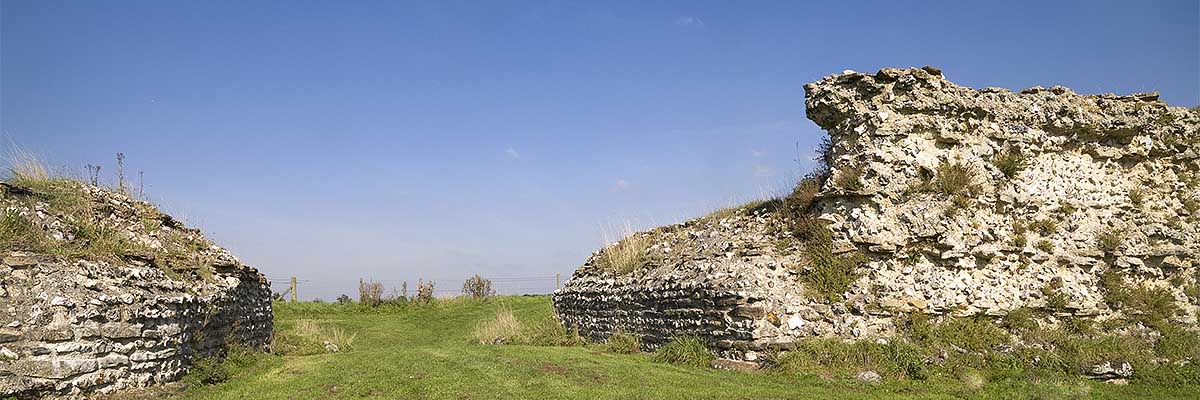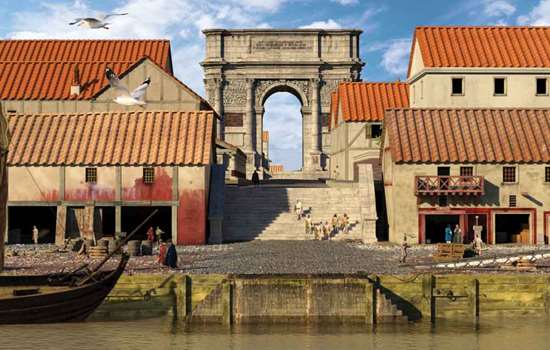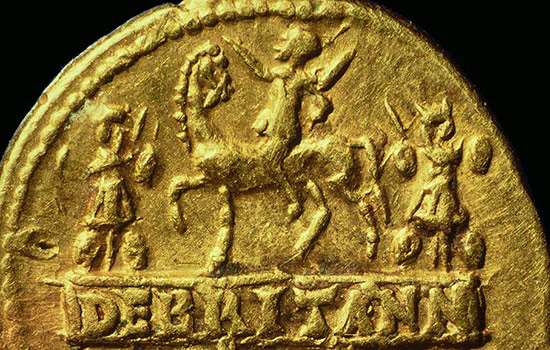History of Silchester Roman City Walls and Amphitheatre
Silchester was originally the centre of the Iron Age kingdom of the Atrebates tribe from the late 1st century BC. After the Roman conquest in AD 43 it developed into the town of Calleva Atrebatum. Laid out on a distinctive street grid pattern, the town contained many public buildings and flourished until the early Anglo-Saxon period. Unusually among the Roman towns of southern Britain, it was not abandoned until the 6th or 7th century. Substantially excavated in the late 19th and early 20th centuries and over the last 30 years, Silchester remains one of the best preserved Roman towns in Britain and is one of the few that were continuously occupied from the Iron Age.

Iron Age Tribal Centre
The Iron Age town of Calleva, which covered over 32 hectares, seems to have been established between about 20 and 10 BC. It may have been a planned settlement of people from north-west Gaul (modern France), centred around the town of Arras and the tribe of the Atrebates.
The town became a major processing and trading centre. Locally manufactured goods, such as horse and chariot gear, were exchanged for metals, grain, slaves and other commodities from across southern Britain. In turn these were passed to the Roman world in exchange for luxury foodstuffs and manufactured goods.
A low bank is the only evidence remaining today of the Iron Age defensive earthworks. There would have been a number of cemeteries situated outside the town. Only one, containing cremation burials, has been found through excavation.
After the Roman conquest the territory of the Atrebates retained some autonomy until the late 1st century AD.
Calleva Atrebatum: A Roman Town
The large Roman town known as Calleva Atrebatum developed from its Iron Age predecessor from the mid 1st century AD onwards.
A regular street grid was laid down over an area of about 40 hectares. Important buildings included public baths in the south-east quarter, and an administrative centre (the forum basilica) in the centre. There was a rest-house (mansio) near the south gate, used by travellers on imperial business, and an amphitheatre on the eastern edge of the town.
The principal streets were crowded with shops and workshops, while wealthier people lived beyond them in larger ornate houses. Several small temples have been identified across the town, as well as a possible Christian church. The town was defended from about AD 200.
Calleva Atrebatum was the local centre for the administration of taxation and justice and an important trading centre. Specialist activities such as metal, wood, textile and leather working took place here. The population was predominantly British, with some foreign merchants and immigrants.
Silchester after the Romans
Unlike most major Roman towns in southern Britain, Calleva Atrebatum did not re-emerge as a town in the medieval period.
Rome lost control of Britain at the beginning of the 5th century AD, when evidence suggests that Silchester was still a flourishing town. It is likely that it was abandoned sometime between AD 550 and 650.
An Ogham stone was discovered during excavations at Silchester in 1893. The inscription is in Ogham writing, which developed in southern Ireland in about AD 400. This is our only evidence of early medieval activity at Silchester.
Domesday Book (1086) lists a village known as Silcestre. During the 12th century an aisled hall was built in the amphitheatre arena. A palisade was erected on top of the banks. This medieval fortification may tentatively be identified with the ‘Castellum de Silva’ (small castle in the woods) recorded as having been taken by King Stephen in 1147 during his wars with the Empress Matilda.
The only surviving physical evidence of medieval Silchester, however, is the 12th-century church of St Mary, located close to the east gate. Archaeological evidence suggests that the medieval village lay between the amphitheatre and the south gate. This village seems to have been deserted around 1400, perhaps as a consequence of the Black Death (1348–9).
The present village was founded to the west of the Roman town, where the earliest houses date from the 17th and 18th centuries.
Silchester Uncovered
The University of Reading has been excavating a particular part of the town, a residential area known as insula IX, every summer since 1997.
Early excavations, particularly those of the Revd Joyce and the Society of Antiquaries (1890–1909), revealed the plans of all the stone buildings. After this, only small-scale excavations took place until the 1980s when the forum basilica and the amphitheatre were investigated.
The University of Reading’s Town Life Project excavations are exploring in detail this residential area, from its Iron Age origins to the end of the Roman occupation of the town. Modern methods, in particular the ability to recognise stratigraphy – the layers that build up over time – have allowed archaeologists to chart the development of individual buildings.
A variety of finds, including pottery, metalwork, and animal and plant remains, are being studied in a chronological sequence in relation to the buildings. The way they change provides insight into the status, lifestyle and occupations of the inhabitants, and their links beyond this town.
Further Reading
Boon, GC, Silchester: The Roman Town of Calleva (David and Charles, 1974)
Clarke, A, Fulford, M and Mathews, M, Silchester Insula IX: The Town Life Project – The First Six Years 1997–2002 (University of Reading, 2002)
Fulford, M, ‘City of the dead: Calleva Atrebatum’, BBC History [accessed 9 Sept 2014]
Fulford, M, A Guide to Silchester: The Roman Town of Calleva Atrebatum (Stroud, 2002)
Fulford, M and Clarke, A, Silchester: City in Transition – The Mid-Roman Occupation of Insula IX c. AD 125–250/300: A Report on Excavations Undertaken since 1997, Britannia Monograph Series 25 (2011)
Fulford, M, Clarke, A and Eckardt, H, Life and Labour in Late Roman Silchester: Excavations in Insula IX since 1997, Britannia Monograph series 22 (2006)
Silchester Roman Town [Reading University website; includes links to The Town Life Project, 1997–2002, and The City in Transition, which explores the archaeology of the mid-Roman period at Silchester, and includes a bibliography]
A Guide to Silchester [with interactive map]


